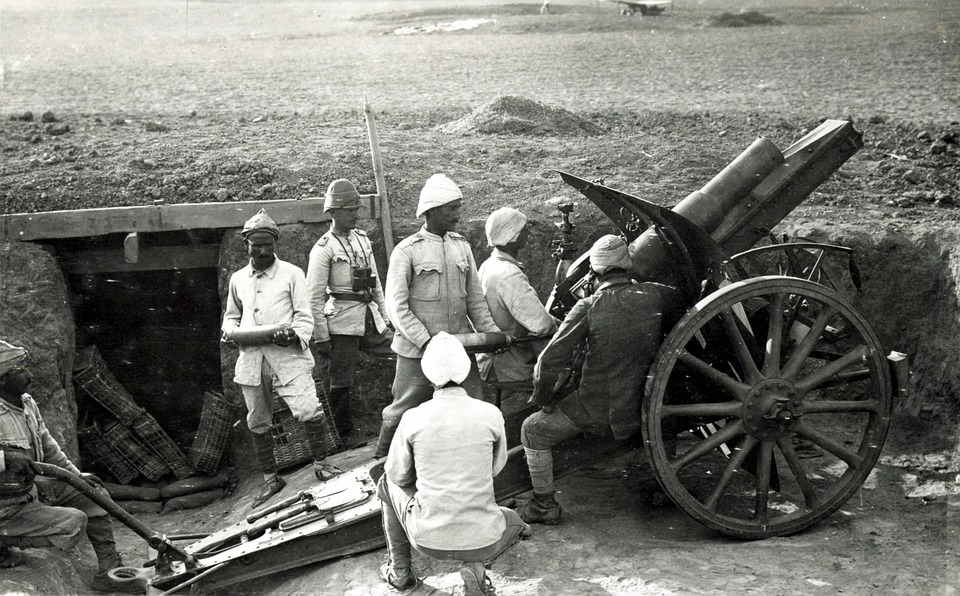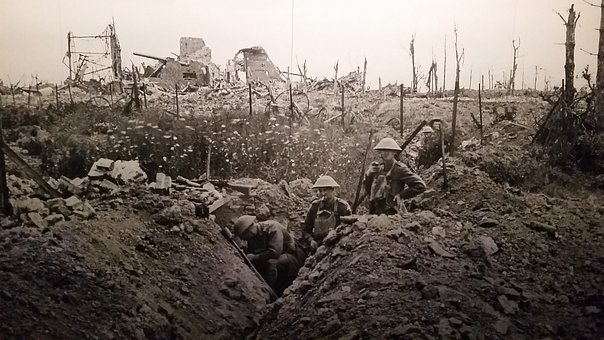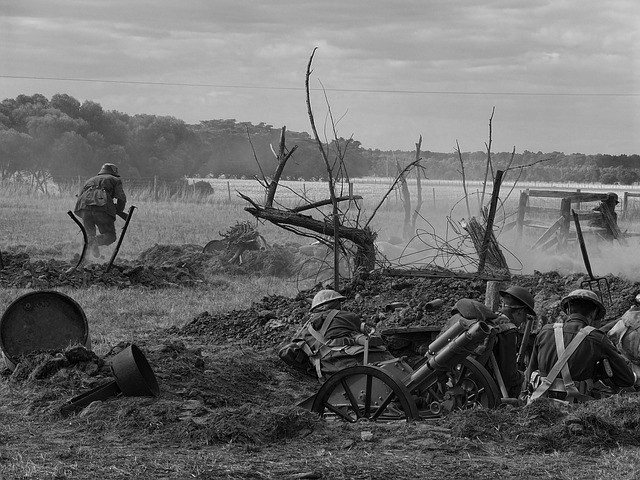- The First World War also known as World War 1 was a global conflict which started from 28 July 1914 and lasted till 11 November 1918.
- It originated in Europe and was one of the deadliest wars in human history.
- Experts and many historians opine that the First World War was a result of the tensions between European powers to take control of the Balkans at the cost of others and changed the power dynamics of Europe only to be challenged again in 21 years.

Causes:
- Gavrilo Princip, a Bosnian Serb nationalist assassinated the Austro-Hungarian heir Archduke Franz Ferdinand on 28th June 1914 in Sarajevo. This led to the July Crisis.
- The Austro-Hungarians were furious and they issued an ultimatum to Serbia on 23rd July 1914. This ultimatum demanded an investigation into the assassination to be led by Austrian investigators and the hunting down and prosecution of Serbian ring-leaders responsible.
- Serbia’s ill response to the ultimatum triggered a war between Austria-Hungary and Serbia.
- This started a chain reaction and different countries started taking sides.
- But, this war was in making for a long time even before the Austria incident. The European powers were keen on expanding their control over the Balkans which led to a series of other conflicts.
- A long time had passed since European powers had any major war. The power dynamics had changed since the end of Napoleanic wars.
- Basically, European countries were eager to get into a brawl and beat each other up.
Belligerents:
- There were two sides formed. They were Allied powers and the Central powers.
- The Allied powers consisted of the U.S (1917-18), France, British Empire, Russia (1914-17), Italy (1915-18), Japan, Serbia, Montenegro, Belgium, Romania (1916-18), Portugal (1916-18), China (1917-18), Greece (1917-18), etc.
- The Central powers consisted of the German Empire, Austria-Hungary, Ottoman Empire, Bulgaria, etc.

Strength:
- In this war, the Allied powers had a man-power advantage over the Central powers.
- The Allies had a total strength of 42,960,000 personnel and the Central powers had a total strength of 25,248,321 personnel.
Casualties and losses:
- The Allies had heavy casualties of 5,525,000 military personnel and 4,000,000 civilians whereas Central powers lost its 4,386,000 military personnel and 3,700,000 civilians.
- On a whole, this war claimed more than 20 million lives and left 21 million people wounded.
Overview:
- Russia joined Allied powers in 1914 as it supported Serbia.
- Germany’s plan was to defeat France in the west front within six weeks and then move its troops to eastern frontier before Russia could fully mobilize and deploy its troops.
- This German strategy later came to be known as Schlieffen plan. To achieve a quick victory over France, Germany demanded free passage through Belgium on 2nd August.

- When the Belgian government refused, Germany invaded Belgium on 3rd August and declared war on France the same day.
- With this, Belgian government requested support from Britain. In reference to the 1839 Treaty of London, Britain declared war on Germany on August 4th.
- Britain and France together declared war on Austria-Hungary on 12th August and Japan joined the Allied powers on 23rd August.
- Ottoman Empire entered war in November 1914 and joined Central powers.

- The U.S remained neutral until 1917, although it supplied war materials and goods to Allied powers. U.S joined the war against Germany on 6th April 1917.
- The reason behind this was that the German navy was sinking the American merchant ships to break the supply line from U.S to Britain and Germany was provoking Mexico to attack the U.S.
- The further German advance into French territory was stopped at the city of Marne. Long series of trench lines were created the fight continued along the trench lines until 1917.
- All the other central power allies fighting around the world were pushed back and were made to surrender.
- As many of the offensives carried out by the German forces were failed and the German reserves were exhausted, Germany was pushed back on all frontiers.

Conclusion:
- Bulgaria became the first Central Power to sign an armistice on 29th September 1918.
- On 30th October, captured Ottoman Empire signed the Armistice of Mudros.
- On 4th November, Austro-Hungarian Empire was defeated and it agreed to the Armistice of Villa Glusti.
- As Germany was the only central power remaining, all military reserves exhausted and abdication of German Emperor Kaiser Wilhelm, Germany signed the treaty of Vienna thus officially ending the First World War.
Aftermath of First World War:
The period after the First World War was a period of profound change that shook the world. Let’s focus on some important aspects.
- Political and Social Changes:
- As a result of the war, four empires (Austro-Hungarian, Ottoman, German and Russian) collapsed.
- The old states collapsed and new states arose. Borders were redrawn and the world map had a new look.
- International organizations such as the League of Nations were created to foster peace and cooperation. – Ideology took precedence, shaping consciousness and society.
2. Human loss and suffering:
- The war had serious consequences. About 1 million people died due to unemployment, hunger and epidemics that affected the post-war society.
3. Unrest in Germany:
- Emperor Wilhelm II went into exile in the Netherlands and Germany became a republic in November 1918.
- The Weimar Republic was born as a new democratic government in Germany. – It contributed to the rise of extremist ideologies after the war, including the rise of the Nazi Party.
4. Financial problem:
- The Allies maintained a naval blockade of Germany until the Treaty of Versailles in 1919.
- The siege brought enormous suffering, with an estimated 523,000 civilians dying from hardship and disease. – The German economy, which was very dependent on imports, suffered during this period.
5. Universal vote:
- World War I promoted political change. Most of the participating countries have become electoral democracies. – For the first time in history, countries such as Germany, the United Kingdom and Turkey had almost universal suffrage.
Simply put, the period after the First World War reshaped peoples, societies and ideologies and left an indelible mark on history.
To read about the first world war in a detailed manner, visit this link:
https://en.wikipedia.org/wiki/World_War_I
To read about the Second World War, visit:
https://warsandweapons.com/2020/04/09/second-world-war/


Pingback: 20th Century: Wars and Battles - WarsAndWeapons